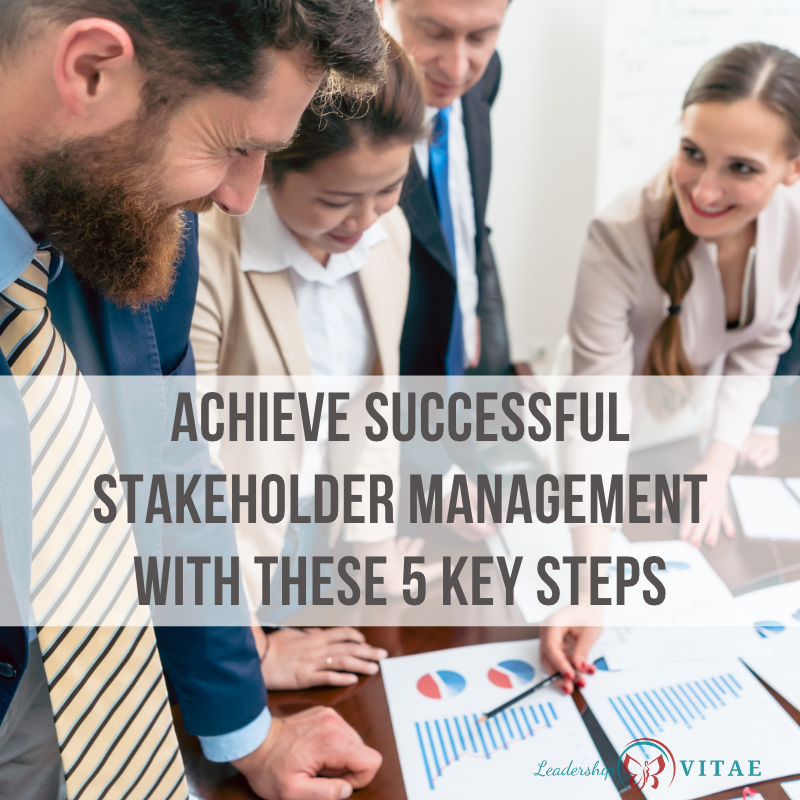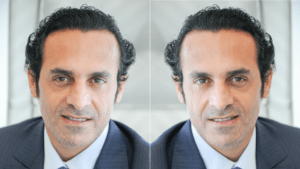
Transformation work is all about taking what is and turning it into something new. This may mean building a team from scratch, changing an existing team so they are doing something new, or implementing a new capability that will shift the way we do business.
That kind of work tends to stand out in an organization. It’s usually aligned to some sort of strategic imperative. A key initiative or critical revenue driver. No matter what we’re changing, we can count on one thing. There are stakeholders who have their eye on it and those whose help we need to make it happen.
I’m returning to transformation work and am sharing some of the considerations and approaches I’ll be taking with me. This is the second in a three-part series to help others who may be asked to lead change.
All change involves stakeholders without exception. Managing them effectively is critical to both our transformation effort, and often our future opportunities. Not to put too fine a point on it or anything.
Know them
The first step in managing stakeholders is to know them. Not in a stalker way. Well…maybe.
Every person is different. What resonates with one may not with another. For example, while there are certain commonalities among senior leaders, they can show up very differently from one another. Sometimes in different forums, such as 1×1 vs a project update.
For years, I found that most executives operated at 30K feet. They’d ask questions, and if they didn’t like the answers, then they might go down to 10K, 1K, or 10 feet off the ground. It was a critical skill to answer questions early and well to keep them at altitude.
That approach worked in a culture where the CEO and her directs worked that way. In another organization, the CEO was very detail-oriented. That mentality trickled down into the organization and meant that most executives were a lot more curious and wanted to understand details I never would have assumed an executive would care about.
Ahead of meeting with stakeholders, we can do our homework. Find out who’s detail-oriented and loves excel, or who prefers storytelling and hates powerpoint. What’s important to them? Are they sponsoring employee resource groups or certain strategic initiatives (if they aren’t our own)?
If our direct leader or peers don’t have this information, there’s always the “person in the know” in the organization. I haven’t found a team yet without one. Finding that person and getting the inside scoop on our stakeholders can save a lot of headaches in our interactions.
Give to get
Stakeholder management is about building relationships. While we are highly likely to need their help or support at some point in our efforts, they aren’t a bank account we can just draw from. We need to invest first.
While it’s not always possible, having a mindset of “give to get” helps ensure we are building a solid foundation for that relationship. When I first meet new people, I’m thinking of what I can I solve, make better, or otherwise give. They may not even be a stakeholder yet…maybe an interested party I’ve been introduced to.
I don’t do this to be mercenary about it, but because I genuinely like helping people. Traditional networking for me often feels take oriented. Instead, I network my way by figuring out how to give. It might be an introduction to someone else I think they’d get along with, or an article or book that’s relevant to their work.
One of the most surprising gifts I’ve given is being myself and creating a space safe for senior executives to do the same. I’ve heard many times how lonely leadership can be. I no longer underestimate the value of occasionally providing a haven and how much that matters to someone who’s used to others wanting something from them.
Give first. Without attachment or thought to what might come in return. When we do that, we have trusted folks we can turn to when things get rough and we’re the ones in need.
Align to their why
When we know what matters to our stakeholders – what they value – we are more likely to meet their need or obtain their help and support. Yes, we can align to their organizational needs and that might be enough. But if we know their why, and we can align with that, people will move mountains.
Just in what I’ve written here, you are likely able to figure out my why. I have committed my life to helping people. It’s that simple.
If you know that and anchor our interactions to my why, you are more likely to get my help. Certainly more likely than if you come to me with how something will help me politically, for example. That’s more likely to turn me off to you and whatever your challenge or opportunity is.
A recent leader was committed to simplification. His passion was eliminating wasteful spending, redundancies in the organization, and anything that took away from our mission. A former Marine officer I worked for was similar. He wanted to eliminate waste so we could redirect funds to boots, flak jackets, tank repairs…anything that was in service to the core function of Marines.
Knowing those passions allowed me to consider how the work I was doing aligned with their why. If I needed help, to change direction, or support I could frame any asks with that passion in mind. We are much more likely to get a yes, particularly when it’s risky, costly, or questionable, when we align to a passionate why.
Speak their language
Here in the States, we may assume everyone we work with speak English. Yet there are different languages found in the various industries, companies, and rooms we find ourselves in.
In my new role, there are endless acronyms. Same company, but a whole new world I’m unfamiliar with. But it goes beyond that to the way they talk.
For folks in back-office teams, maybe it’s all about bottom lines, KPIs, and timelines. Yet in front-office teams, it’s customers, NPS, friction, and product features.
Even within teams, they may speak differently. Some like stories and images. Others prefer data and details. When we want to connect with our stakeholders, it’s critical to understand their language.
No matter who our stakeholders are – their level or place in an organization – they all want to be spoken to in a way that they feel heard and valued. If it’s not a universal truth, it should be.
If we really want to hear our stakeholders, we have to learn their language to receive it fully. Valuing them means taking what we’ve heard and acting upon it. Can’t do that if we’re hearing it wrong, so learning their particular language is a key step.
Close the loop
In each of these articles, communication comes up. There is nothing more important than communication in transformation work. Feel free to argue. I’ll wait.
Understanding what types of engagement our stakeholders may need from us, and how and when to communicate is a good start. Building and maintaining the relationship goes beyond that, however. We need to close the loop.
If we run into a rough spot and a stakeholder offers us advice, we can let them know how it helped. They shared their particular needs of our change effort? Share back the plan and, once complete, how the need was resolved.
Closing the loop builds trust. It also feels good for both parties. When we give our time, effort, support, etc, it can feel good if we know how things played out. More than one executive has shared that they love to help, but the true gift is in knowing the result. Even if it didn’t work.
Closing the loop is expressing appreciation. It’s giving back the “feel good” moment and making any help or support a bi-directional exchange. It keeps the relationship going so it doesn’t feel transactional.
* * *
As a stakeholder or change leader, what else would you recommend to help others on their transformation journey? Please add your thoughts on stakeholder management and what’s been shared to the comments below.









One Response
You have brought up a very good points, regards for the post.